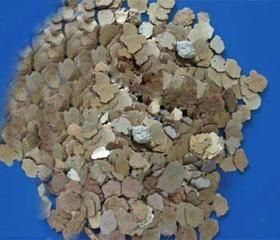Description
Application in Resin and Plastic
Industries
(1)
Changing the Optical Properties of Plastics: Mica chips
can reflect and radiate infrared rays as well as absorb and shield
UV, etc. Therefore, if adding high-quality wet ground mica into
agricultural films, it will be difficult for light to go out after
penetrating in, thus preserving heat to greenhouse and field
plastic film, etc. In this application, the purity and flaky
structure of mica powder are very important. On one hand,
impurities will reduce mica of its enhancement effect, influence
its transparency, increase the fog level as well as decrease
light’s entering of the greenhouse. On the other hand, if the mica
is not good in flaky structure, then its effect of obstructing
infrared radiation is also poor. Gansu Gelan Chemical Technology
Co., Ltd., of Hong Kong Lee Group ever used wet ground mica to make
agricultural film, only to reduce its transparency by
2%.
Drugs, cosmetics, food and other
products need to shield out radiation, particularly ultraviolet
radiation, to improve their storage performance. To make this, we
can add perfectly flake-structured wet ground mica powder into
their plastic packing materials. Large-size mica filler can improve
the luster of materials (pearlescent effect), and fine mica powder
can remove the luster.
(2)
Improving Air-Tightness of Plastics:Wet ground mica powder
has excellent thin sheet shape, with the thickness in nanometers
and diameter-thickness ratio up to *0 ~ **0 times, thus having a
very large effective blocking area. The air-tightness of plastics
will be dramatically increased after adding in high-quality and
high-purity wet mica powder. Such plastics, according to the patent
literature, can be used to make Coke bottles, beer bottles,
medicine bottles, moisture-proof packaging materials as well as
many similar special kinds of plastic packaging
materials.
(3)
Improving Physical and Mechanical Properties of
Plastics: Flaky and fibrous fillers can decentralize
the stress of materials, which is similar to the reinforcing steels
in the cement concrete and the anisotropic materials in many
enhancing materials (plastic, rubber, resin, etc.). Its most
typical application is in carbon fiber, but carbon fiber is quite
expensive and limited in luster, therefore, it is difficult to put
it into application. Asbestos is strictly limited in application
for it can cause cancer. Ultra-fine glass fiber (e.g., diameter of
1 micron or in nanometer level) faces many difficulties in
manufacture and its price is also rather high. Granular filler,
including micron quartz powder and kaolin powder that abound in dry
ground mica do not possess this function like sand and stones in
the cement concrete. Only when adding filler as wet ground mica
powder that is high in diameter-thickness ratio, the tensile
strength, impact strength, elastic modulus, other mechanical
properties, shape stability (such as heat denaturation and
anti-torsion fatigue creep variability), and anti-wear performance
will be improved significantly. Quite a lot of study about this has
been carried out in Materials Science. One key is the sizes of
fillers.
(4) Improving
the Insulating Property of Plastic Products: Mica has a very high
rate of electric resistance, so it’s a high-performance insulating
materials itself. Using mica to improve the insulation property of
materials is a well-known technology. For manufacture of high
insulation plastic products, functional filler wet ground mica can
be added in. As stated above, mica high in iron content shall be
avoided for its low insulation function. Dry ground mica hasn’t
been washed of mine and is high in iron content, so it is not
suitable for using.
Specification:
|
Tech Features |
Screen Over-Size
% |
Sand
%
≤ |
Loss on Ignition
%
≤ |
Bulk Density
g/cm3
≤ |
Moisture
%
≤ |
Whiteness
。
≥ |
|
Indicators |
|
Specs |
*5um
(**0 mesh) |
*5um≤0.*5
*5um≤*0.0 |
0.8 |
5.0 |
0.*2 |
1.0 |
*0 |
*8um
(**0 mesh) |
*5um≤0.1
*8um≤*0.0 |
0.5 |
0.*8 |
*5um
(**5 mesh) |
**2um≤0.1
*5um≤*0.0 |
*5um
(**0 mesh) |
**0um≤0.1
*5um≤*0.0 |
0.6 |
0.*0 |
*5 |
*0um
(**0 mesh) |
**0um≤0.1
*0um≤*0.0 |
1.0 |
**5um
(**0 mesh) |
**0um≤0.1
**5um≤*0.0 |
0.*2 |
